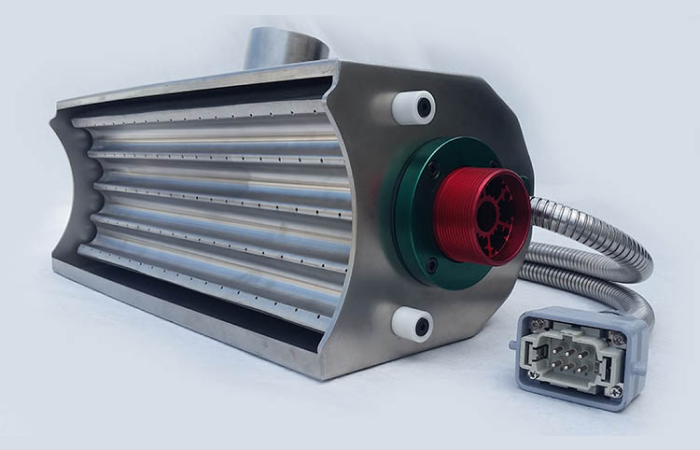Chill Drum Dryers
Chill Drum Presses evolved from the narrow web inline label press. Chill drums were introduced as a mechanism to stabilize temperature sensitive webs while forced air dryer systems “warmed up” and especially while the press is stopped. Chill drums are critical components used to manage the heat generated by UV curing lights. Chill drums are key allies for stabilizing shrink film, polyethylene, and other unsupported extensible webs once the press is stopped.
During the printing process chill drums can throttle the evaporation rate of inks. Conductive heat transfer, from the web contacting the metal drum, is always stronger than the convective heat transfer of any forced air technology. For this reason, the evaporation of slow solvents can be problematic for the chill drum press particularly with thin materials. That’s why a good strategy is to run with an elevated drum temperature making the word “chill” a misnomer.
Most inline printing press manufacturers offer a chilled roll for UV curing lamps including independent chill drums or also dual purposed as the impression cylinder. Given the narrow profile of the UV curing lamp, these chill drums can be small in diameter providing insufficient real estate to install an effective forced air dryer while managing temperature sensitive webs. There are much fewer manufacturers of chill drum presses configured for forced air dryers.
Chill Drum Dryers arrange turbulent orifice patterns cylindrically around the chill drum. The dryer design is achieved differently depending which FlexAir technology is applied. Multiple A-Class Nozzles or C-Class Air Bars are positioned over, and oriented around, the chill drum. B Class weldments configure multiple rows of orifices into a single pressurized plenum.
Chill Drum Dryers: Key Design Features
- Independent temperature control of each chill drum dryer.
- Independent pressure control with C Class Technology
- Solutions that integrate controls with the dryer head.


